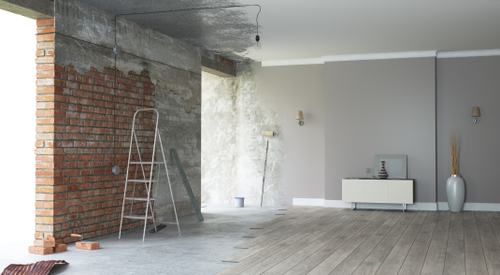
Tom Schenkenberg
May 15, 2017

Tom Schenkenberg
May 15, 2017

When custom business software becomes obsolete, many organizations choose almost automatically to have completely new software built. Renovation is often not considered. While in 70 percent of the cases it is more successful and cheaper. It is an interesting option, which I would always consider. Because in that old application there are often great treasures hidden.
We’re all getting older. Even the software that organizations have built. If applications become too old, the functionality or quality no longer suffices. Making changes becomes more difficult or expensive and is more likely to lead to errors. While the application is probably becoming more and more important has become for the success of the organization. But meanwhile, new requirements are being set, for example: flexibility, availability, mobile use, performance and security. Innovation then becomes inevitable.
In our daily practice we help organizations with both new construction and renovation of web and mobile apps. Remarkably, it is often automatically thought of having a new application made, which in turn meets modern requirements. All new insights, requirements and wishes can then be included ‘immediately’. After the new building you migrate the data, users switch over and the old application can be thrown into the wastebasket. But it is often not as simple as that. New construction is often underestimated.
The old application often contains a lot of important business rules, which are nowhere recorded and nobody can remember well anymore. But most of the time it was those that made the application successful. A new team has to take those parts out of the old application and integrate them back into the new software. That takes time.
And often a new application is built next to the old one. In the meantime, adjustments are also made to the old environment, which results in duplicate work for a while. In order to keep that period as short as possible, the pressure around new construction regularly increases. This is often not the ideal solution. Even a ‘big bang’ migration - in which the old application is replaced in one go - often turns out not to be a good solution. For that, the new application must first be completely finished before you can take new steps again.
There’s another way. In most cases, renovation turns out to be the best solution. To do so, you first have to look at the old application. It is valuable and has supported your business for years. That’s a good starting point for change. Describe the desired end point, based on your new requirements. The renovation has to bridge the gap.
It often doesn’t have to be a large complex and lengthy project. It can be done in small steps that can be overseen and budgeted for. A different part of the application can be improved each time. In most cases it turns out to be the most successful and the most efficient. A big difference is that new parts can be used much faster during renovation. In new construction, the new software is sometimes ‘on the shelf’ for a long time, until it is completely finished.
Modern software development involves a modern development process. With small subprojects, the results of which are used immediately. Feedback from users can be processed immediately. Anyone who has a good command of this process often avoids being faced with the choice between new construction or renovation. A modern application requires periodic ‘renovation’. In this way you stay ahead of the point of decay.
In the past, an application was built in 12 months and used for 8 years. Nowadays that application is built in 12 weeks and used for 8 years. The result is an application that suits you better all this time and contributes more to the success of your organization. With a more efficient approach and usually lower costs.